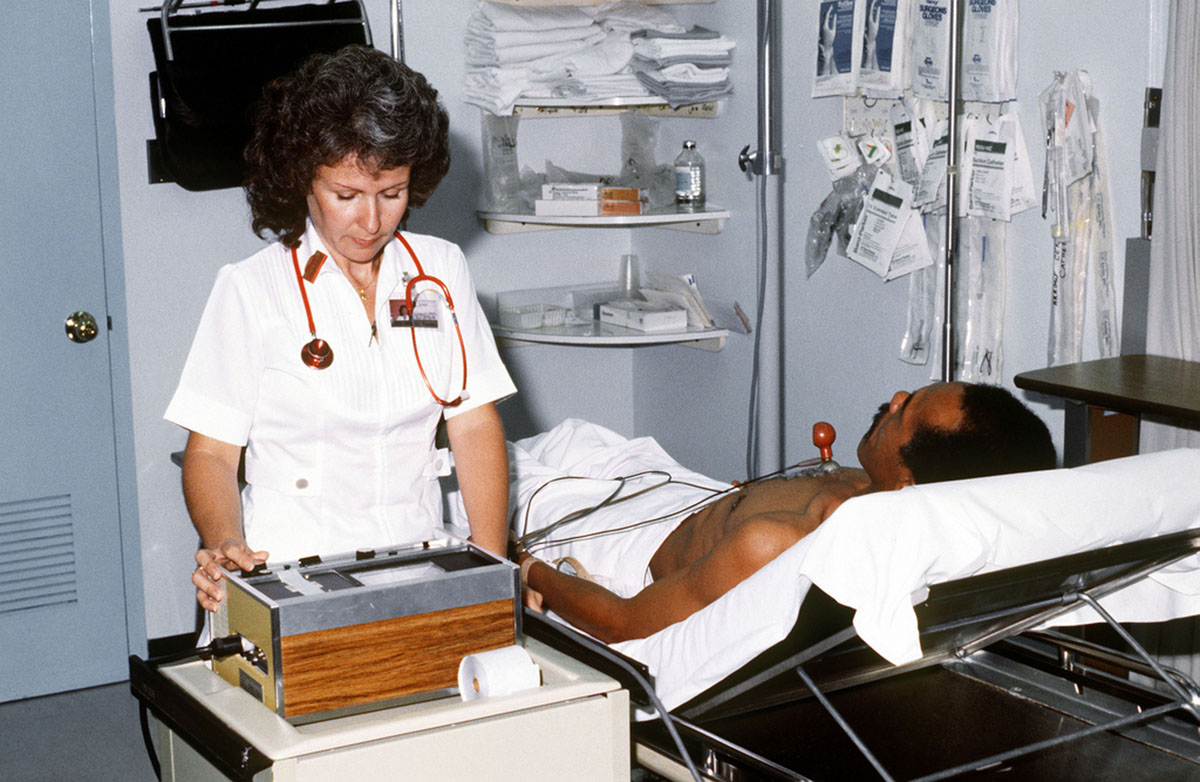Table of Contents
Any type of chest pain should be evaluated by a doctor to determine the cause. Stable angina can be managed fairly simply, but unstable angina requires further investigation and intervention. There are several diagnostic tests that are ordered to determine whether serious attention is necessary.

Diagnostic Tests
The simplest is an electrocardiogram (EKG). It's a painless test that shows the electrical activity of the heart, as well as how many times it beats per minute and whether it is beating with a regular or irregular rhythm. Depending on the patterns displayed, doctors can identify signs of heart damage and malfunction.
Some people with angina have normal EKG readings, so the next diagnostic tool is a stress test. Through physical exercise or, for those who are unable to exercise, a medication that increases the heart rate, stress is placed on the heart to see how it performs. Images can be made of the heart during the stress test to see how well blood is supplied to heart and to see how well the heart supplies blood to the body.
A more invasive test is coronary angiography. During this procedure, a catheter inserted into a blood vessel and maneuvered up to the coronary arteries. Once placed, a special dye is released into the bloodstream. As the dye spreads through the coronary arteries, special x-rays are taken. The dye reacts to the x-rays and presents a vivid picture of the blood flow, permitting doctors a clear view of any obstructions in the arteries.
Another method of visualizing the arteries is a CT scan, or computed tomography angiography. Like angiography, it uses dye and a special scanner to graph blood flow, but the dye is inserted through an IV line instead of a catheter. The scanner itself also moves around the entire body, allowing a 3D picture of the heart to be created.
How is Angina Treated?
While unstable angina requires complex intervention, stable angina can be treated and managed fairly simply. For the immediate pain of an attack, nitroglycerin is usually prescribed. These tiny pills in their dark glass bottles are carried constantly by people who suffer angina. The pills are placed under the tongue and dissolve quickly, rapidly absorbing into the bloodstream and relaxing constricted blood vessels.
See Also: What Are The Real Symptoms Of A Heart Attack?
Like so many other conditions, smoking is a key contributor to the disease. Quitting smoking can go a long way in reducing the risk for CHD and in relieving constricted blood vessels. People should also eat a healthy and varied diet. There is plenty of back and forth on what type of diet is best for a healthy heart. Some say low-fat; others say it's not fat that's the problem, but the highly-processed fats that are prevalent in Western diets that are the issue. Regardless, moderation and variety are key. Finally, exercise is necessary. People with angina should consult with their doctors to determine an appropriate regimen of physical activity that will help with weight loss and good cardiovascular health.
- Angina pectoris. (2001). In Taber's Cyclopedic Medical Dictionary (p.112, Edition 19). Philadelphia, PA: F. A. Davis Company.
- Photo courtesy of Dion Hinchcliffe by Flickr : www.flickr.com/photos/dionhinchcliffe/3065970482/
- Photo courtesy of Expert Infantry by Flickr : www.flickr.com/photos/expertinfantry/5467553232/


Your thoughts on this